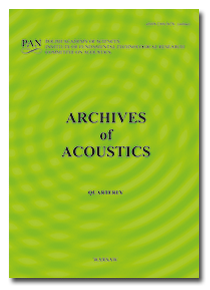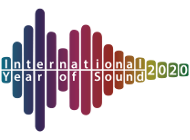Peripheral and central processes in hearing
References
S.P. Bacon and J.M. Opie, Monotic and dichotic modulation detection interference in practised and unpractised subjects, J. Acoust. Soc. Am., 95, 2637–2641 (1994).
A.S. Bregman, Auditory scene analysis: The perceptual organization of sound, The MIT Press,
J.W.Hall and J.H. Grose, Some effects of auditory grouping factors on modulation detection interference (MDI), J. Acoust. Soc. Am., 90, 3028–3035 (1991).
J.W. Hall, M.P. Haggard and M.A. Fernandes, Detection in noise by spectro-temporal pattern analysis, J. Acoust. Soc. Am., 76, 50–56 (1984).
U. Jorasz, Selektywność układu słuchowego, Wydawnictwo Naukowe UAM, Poznan 1999.
U. Jorasz, Wykłady z psychoakustyki, Wydawnictwo Naukowe UAM, Poznan 1998.
L. Mendoza, J.W. Hall and J.H. Grose, Within- and across- channel processes in modulation detection interference, J. Acoust. Soc. Am., 97, 3072–3079 (1995).
B.C.J. Moore, Across-channel processes in auditory masking, J. Acoust. Soc. Jpn. (E), 13, 25–37 (1992).
B.C.J. Moore, An introduction to the psychology of hearing (4th ed.), London 1997.
B.C.J. Moore [Ed.], Hearing, London 1995.
B.C.J. Moore and U. Jorasz, Detection of changes in modulation depth of a target sound in the presence of other modulated sounds, J. Acoust. Soc. Am., 91, 1051–1061 (1992).
B.C.J. Moore and U. Jorasz, Modulation discrimination interference and comodulation masking release as a function of the number and spectral placement of narrow-band noise modulators, J. Acoust. Soc. Am., 100, 2373–2381 (1996).
B.C.J. Moore, A. Sek and M.J. Shailer, Modulation discrimination interference for narrowband noise modulators, J. Acoust. Soc. Am., 97, 2493–2497 (1995).
B.C.J.Moore and M.J. Shailer, Modulation discrimination interference and auditory grouping, Phil. Trans. Roy. Soc. Lond. B, 336, 339–346 (1992).
R.D. Patterson and B.C.J. Moore, Auditory filters and excitation patterns as representations of frequency resolution, [in:] Frequency Selectivity in Hearing, B.C.J. Moore [Ed.], Academic, London 1986.
L.M. Richardson, P.A. Busby and G.M. Clark, Modulation detection interference in cochlear implant subjects, J. Acoust. Soc. Am., 104, 442–452 (1998).
G.P. Schooneveldt and B.C.J. Moore, Comodulation masking release (CMR): Effects of signal frequency, flanking-band frequency, masker bandwidth, flanking-band level, and monotic versus dichotic presentation of the flanking band, J. Acoust. Soc. Am., 82, 1944–1956 (1987).
J.L. Verhey, T. Dau and B. Kollmeier, Within-channel cues in comodulation masking release (CMR): Experiments and model predictions using a modulation-filterbank model, J. Acoust Soc. Am., 106, 2733–2745 (1999).
W.A. Yost and S. Sheft, Across-critical band processing of amplitude-modulated tones, J. Acoust. Soc. Am., 85, 848–857 (1989).
E. Zwicker, Masking and psychological excitation as consequences of the ear’s frequency analysis, [in:] Frequency Analysis and Periodicity Detection in Hearing, R. Plomp, G.F. Smoorenburg [Eds.], Sijthoff, Leiden 1970.





